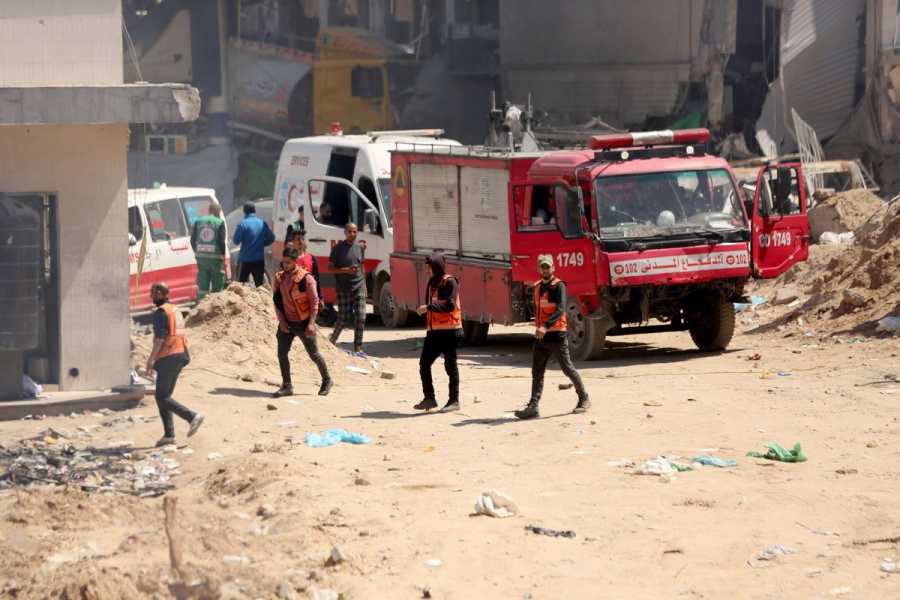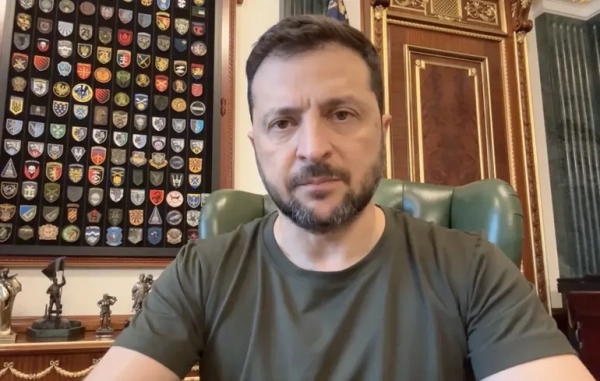What we know — and what we don’t — about the mass graves at Gaza hospitals.

Gazan teams, civil defense, crime scene investigation, and forensics continue to carry out investigation at the scene after Israeli siege and attacks that destroyed Gaza’s al-Shifa Hospital in Gaza City, Gaza, on April 17, 2024. Dawoud Abo Alkas/Anadolu via Getty Images Ellen Ioanes covers breaking and general assignment news as the weekend reporter at Vox. She previously worked at Business Insider covering the military and global conflicts.
A mass grave with 324 bodies was uncovered at Gaza’s Nasser Hospital, members of Gaza Civil Defense said over the weekend. The discovery follows reports of similar mass graves at the al-Shifa Hospital complex, where some 381 bodies have been exhumed since Israeli troops withdrew from the facility at the beginning of April.
As part of its ongoing war in Gaza following Hamas’s October 7 attack on Israel, the Israeli military conducted extensive raids at both hospitals earlier this year.
There’s a lot that’s unknown about the victims, including their causes of death. Some bodies had been buried at and around the hospital grounds because they could not safely be interred at cemeteries. But the sharp increases in the number of dead raise concerns that both hospitals could be the sites of serious crimes, including possibly extrajudicial killings, that require an independent investigation, according to the UN High Commissioner for Human Rights.
That’s why the discovery of hundreds of bodies in the grave sites is so alarming. There are allegations that IDF soldiers moved bodies that were temporarily buried at the hospital, which could lead to families losing track of remains, among other issues. Hospitals are supposed to be protected spaces under international humanitarian law, with an exceptionally high legal bar for carrying out military operations there. And if people were killed during those raids, authorities must be able to determine who they were and how they died, as the intentional killing of civilians is a war crime. In the near term, the ongoing conflict will make it difficult to determine exactly what happened, hindering accountability efforts if wrongdoing occurred.
Some of the victims “were allegedly older people, women and wounded, while others were found tied with their hands … tied and stripped of their clothes,” Ravina Shamdasani, spokesperson for the UN High Commissioner for Human Rights, said Tuesday in a press release. (The UN has not said if it has independently verified these reports but has said they have “renewed concerns about possible war crimes amid ongoing Israeli airstrikes.”)
The Israeli military has rejected the idea that its soldiers buried the bodies, calling such accusations ”baseless and unfounded.” The IDF told CNN that it had examined some bodies in their search for the remains of Israeli hostages, but returned the remains “to their place.”
Here’s what we know about the graves
Starting last fall, Israeli forces targeted Gaza’s hospitals with bombing campaigns and with weeks-long raids at Nasser and al-Shifa, on the premise that Hamas uses civilian infrastructure like hospitals to plan and conduct operations. After a siege on al-Shifa Hospital and a later raid, as well as one on Nasser Hospital in Khan Younis, medical officers suggested many had died. It is not clear how many people were killed in each hospital, how they died, or who they were.
Here’s what we do know about what happened at each hospital.
Al-Shifa Hospital
At al-Shifa Hospital, the IDF says that it killed 200 “terrorists” hiding at the facility and has for months alleged that the hospital was a base of Hamas operations. Hamas media officials say that 400 people were killed during the raid, including at least 20 patients who died from lack of access to medical care, according to the WHO.
Hospital staff have denied that Hamas fighters were at the hospital, according to Reuters. Al-Shifa was destroyed, rendered essentially inoperable during the raid.
Nasser Hospital
According to the IDF, its February attack on Nasser Hospital in Khan Younis was an operation to recover the remains of Israeli hostages thought to be at the facility.
At the time, the IDF told Vox, without providing any evidence to support this assertion, that “Hamas terrorists are likely hiding behind injured civilians inside Nasser Hospital right now and appear to have used the hospital to hide our hostages there too.” The IDF later claimed to have detained 200 “terrorists and suspects in terrorist activities,” but when contacted this week, the IDF did not provide information about what happened to those detained.
Some bodies had been buried at a temporary site at Nasser Hospital during the Israeli siege and raid in February, according to Gaza Civil Defense. But the number of bodies discovered after the raids surpasses the number previously thought to be buried at either site, and it’s not clear where the new bodies came from.
Furthermore, Col. Yamen Abu Suleiman, head of Gaza Civil Defense in Khan Younis, said some of the bodies at the mass grave at Nasser Hospital show signs of summary execution, and some bodies had their hands and feet bound. “We do not know if they were buried alive or executed,” he told CNN. “Most of the bodies are decomposed.” (CNN and other media organizations have not been able to independently verify these allegations.) The group is also searching for the bodies of about 400 people missing since Israeli forces left Nasser Hospital.
The broader picture
Those allegations — and the uncertainty around where the unexpected bodies came from — prompted UN human rights commissioner Volker Türk’s call for “a clear, transparent and credible investigation” into how the people buried at the sites died.
“What appears to have happened, or what is alleged to have happened, is that the IDF dug up many of those bodies, removed identifying information, and then put the bodies back in the grave,” Adil Haque, an international humanitarian law professor at Rutgers University, told Vox. “So now people can’t identify their loved ones without great difficulty.”
There are provisions in international law regarding the dignity of the dead; people should, whenever possible, be buried in marked graves, and their families and loved ones should be able to engage in mourning practices. The presence of mass graves can indicate improper burials, though that is not always the case.
Very little is known about the mass graves so far, especially what happened to the new people buried within them — and that is what’s alarming.
“The question is, what happened during the IDF takeover of the hospital that explains why there’s so many more bodies in the grave than were originally there?” Haque said.
And it’s not clear that the justification for the raids on the hospitals was legal under international humanitarian law, given that medical facilities and personnel receive special protection.
“You cannot attack a hospital, medical services, medical units; medical personnel and medical institutions must be protected,” Anjli Parrin, director of the Global Human Rights Clinic at the University of Chicago Law School, told Vox. “That you’re seeing large numbers of deceased individuals at a hospital is very troubling. There’s a question not just of the bodies but why did you attack these places? Who were the civilians harmed? Was it really the only option? Was it under the legal standard of hostile acts harmful to the enemy?”
Mass graves show a real need for an independent investigation
What happened to the people in the mass graves and why they are there is difficult to understand in part because of the lack of independent information coming out of Gaza. No outside reporters have been allowed in, almost a hundred Palestinian journalists have been killed in Gaza since the start of the war, aid groups struggle to operate, and independent investigative bodies have not been able to access the territory.
“That we don’t know is not good enough,” Parrin said. “The discovery of these mass graves suggests that there’s a really urgent need to carry out investigations, one, but even before you get to that point, to preserve evidence, which the International Court of Justice has ordered Israel to do” following the court’s January ruling that Israel was not doing enough to prevent genocide in Gaza.
If the IDF indeed willfully killed civilians or even militants hors de combat — meaning they’re not on the battlefield due to injury, for example — at the hospitals, that would be a crime. All of the parties to combat are obligated to make sure that evidence is preserved for later investigations and prosecution per IHL.
But getting that investigation into motion will be difficult; for one, it’s not clear who would carry it out, though Haque suggested that the UN Independent International Commission of Inquiry on the occupied Palestinian Territory, including East Jerusalem and Israel, or the Office of the High Commissioner for Human Rights would be the appropriate bodies. And there would need to be a ceasefire, or at the very least guarantees that the investigators could carry out their work safely.
But there is still the question of why Israel has raided so many hospitals in Gaza, which, as Parrin said, is highly unusual in conflict.
“There’s a risk [that] this kind of conduct becomes normalized,” she said. “It would be very worrying for other conflicts. It shouldn’t be the situation that attacks on a hospital are somehow justified.”
Sourse: vox.com






